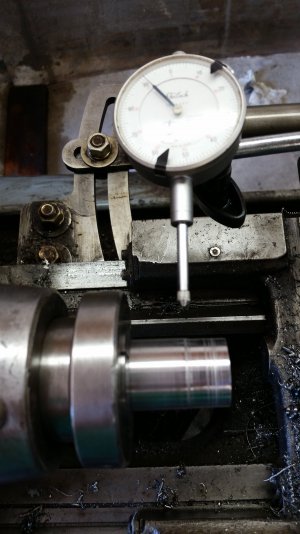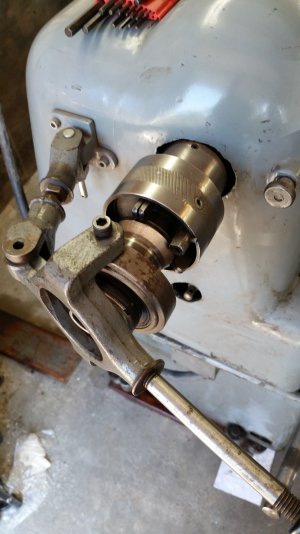Attached are pictures of a quick change collet setup. One picture is the closing mechanism, the second is a 5C collet closer with 5C collet, barely visable, and a piece of 1 inch rod. The mechanism actually works, but is very fussy. There is a pin in the mechanism that locks the mechanism, knurled part in the picture, to the part that attaches directly to the spindle. This adjustment is very sensitive, if it is loose then the mechanism does not close tightly. A very small change it tightening, actual closing rod to actual 5C collet, may adjust from too loose to too tight. (As a note on this setup the closing rod is parhaps 1/2 inch too short. A project will be to make a new one. )
Does anyone have experience with this type of mechanism? Is there a good way to better estimate too tight or too loose?
(Overall I am pleased with the result. When a precise rod is placed in a collet overall run out, spindle, collet closer, collet, and rod, is a few tenths. )
Does anyone have experience with this type of mechanism? Is there a good way to better estimate too tight or too loose?
(Overall I am pleased with the result. When a precise rod is placed in a collet overall run out, spindle, collet closer, collet, and rod, is a few tenths. )



